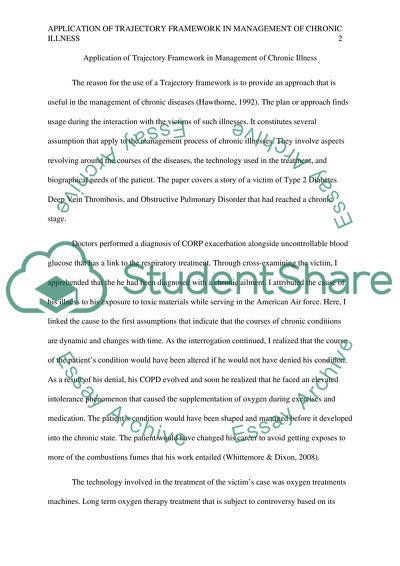Applying the Chronic Illness Trajectory Framework to a past client Coursework. Retrieved from https://studentshare.org/nursing/1694852-applying-the-chronic-illness-trajectory-framework-to-a-past-client
Applying the Chronic Illness Trajectory Framework to a past Client Coursework. https://studentshare.org/nursing/1694852-applying-the-chronic-illness-trajectory-framework-to-a-past-client.


